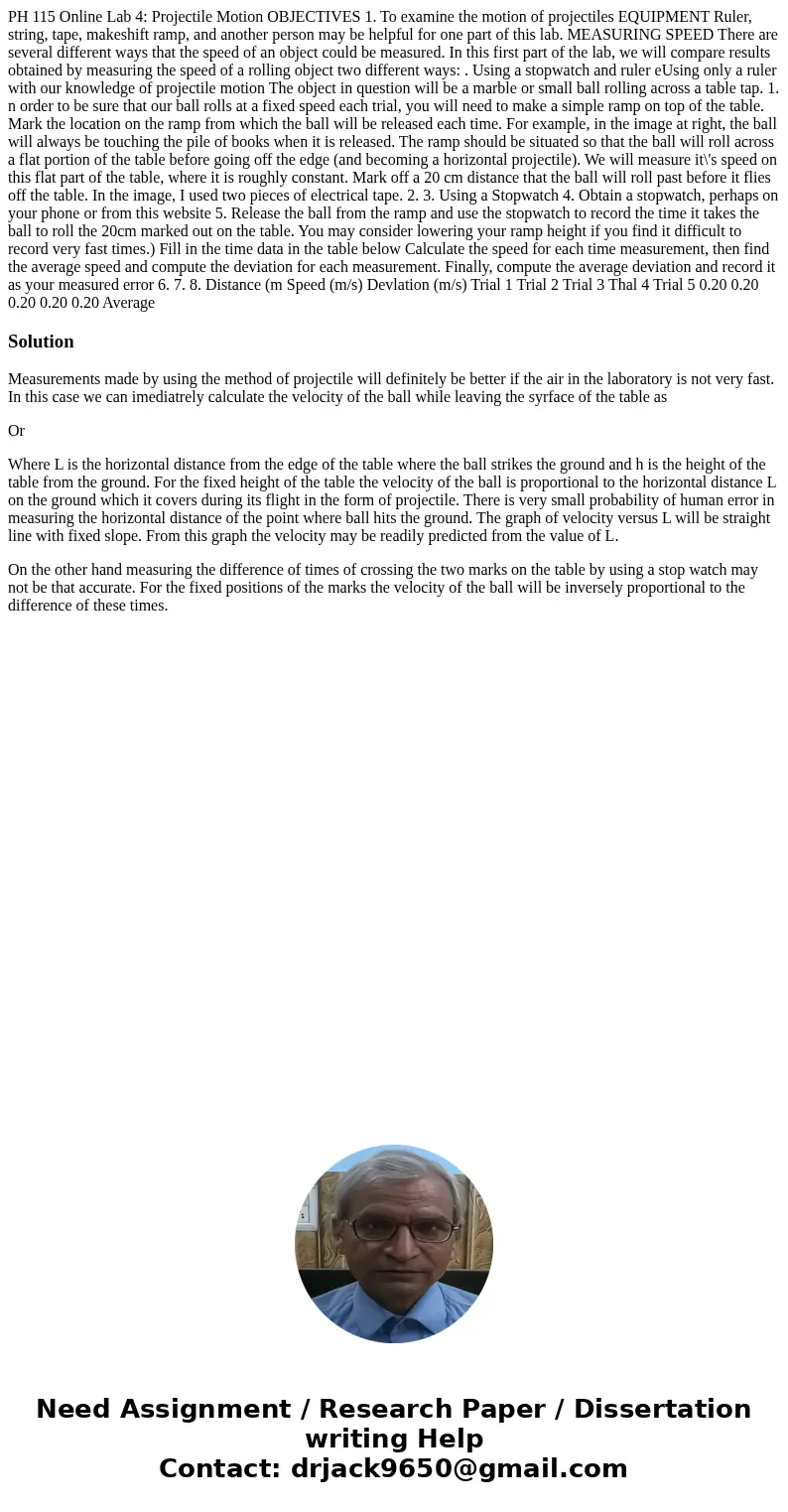PH 115 Online Lab 4: Projectile Motion OBJECTIVES 1. To examine the motion of projectiles EQUIPMENT Ruler, string, tape, makeshift ramp, and another person may be helpful for one part of this lab. MEASURING SPEED There are several different ways that the speed of an object could be measured. In this first part of the lab, we will compare results obtained by measuring the speed of a rolling object two different ways: . Using a stopwatch and ruler eUsing only a ruler with our knowledge of projectile motion The object in question will be a marble or small ball rolling across a table tap. 1. n order to be sure that our ball rolls at a fixed speed each trial, you will need to make a simple ramp on top of the table. Mark the location on the ramp from which the ball will be released each time. For example, in the image at right, the ball will always be touching the pile of books when it is released. The ramp should be situated so that the ball will roll across a flat portion of the table before going off the edge (and becoming a horizontal projectile). We will measure it\'s speed on this flat part of the table, where it is roughly constant. Mark off a 20 cm distance that the ball will roll past before it flies off the table. In the image, I used two pieces of electrical tape. 2. 3. Using a Stopwatch 4. Obtain a stopwatch, perhaps on your phone or from this website 5. Release the ball from the ramp and use the stopwatch to record the time it takes the ball to roll the 20cm marked out on the table. You may consider lowering your ramp height if you find it difficult to record very fast times.) Fill in the time data in the table below Calculate the speed for each time measurement, then find the average speed and compute the deviation for each measurement. Finally, compute the average deviation and record it as your measured error 6. 7. 8. Distance (m Speed (m/s) Devlation (m/s) Trial 1 Trial 2 Trial 3 Thal 4 Trial 5 0.20 0.20 0.20 0.20 0.20 Average
Measurements made by using the method of projectile will definitely be better if the air in the laboratory is not very fast. In this case we can imediatrely calculate the velocity of the ball while leaving the syrface of the table as
Or
Where L is the horizontal distance from the edge of the table where the ball strikes the ground and h is the height of the table from the ground. For the fixed height of the table the velocity of the ball is proportional to the horizontal distance L on the ground which it covers during its flight in the form of projectile. There is very small probability of human error in measuring the horizontal distance of the point where ball hits the ground. The graph of velocity versus L will be straight line with fixed slope. From this graph the velocity may be readily predicted from the value of L.
On the other hand measuring the difference of times of crossing the two marks on the table by using a stop watch may not be that accurate. For the fixed positions of the marks the velocity of the ball will be inversely proportional to the difference of these times.

 Homework Sourse
Homework Sourse